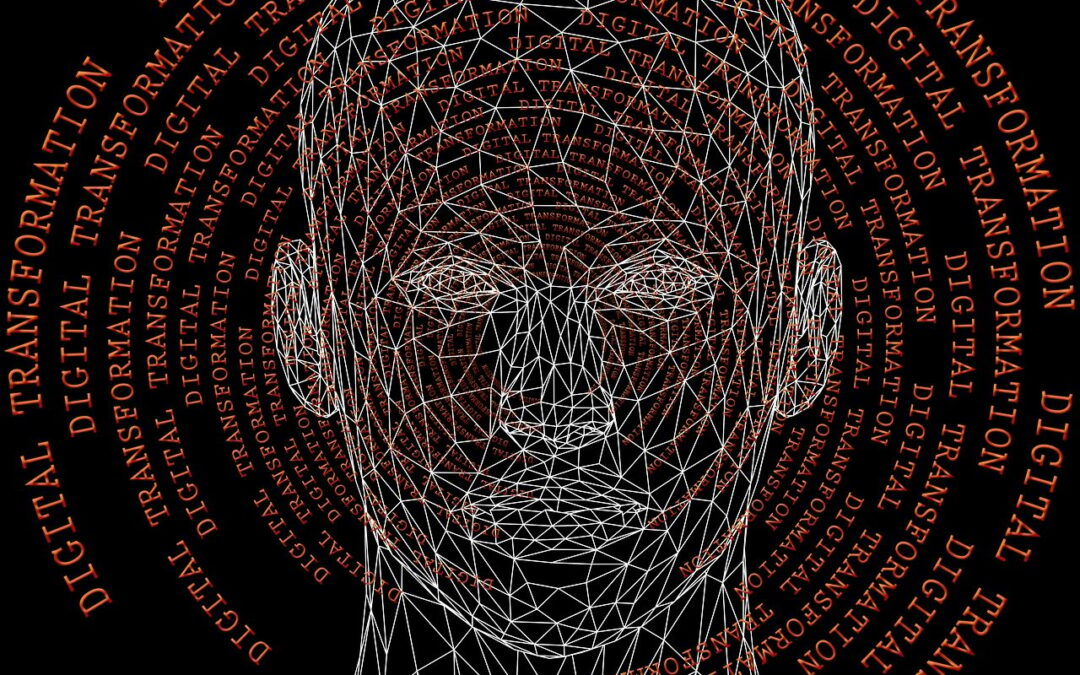
by Atiya Sheikh | May 25, 2025 | Board Members, Board Trustees, CEO, CFO, COO, CIO, General Managers, Heads of Divisions, Leadership Development
Resilience Starts at the Top: How Leaders Can Equip Their Businesses for Disruption
In an age of constant flux, where global shocks and rapid change have become the norm, the role of a CEO has evolved. Today’s leaders must move beyond traditional responsibilities and embrace a more dynamic title: Chief Resilience Officer.
Recent research from McKinsey & Company raises a pressing concern—84% of business leaders say they feel ill-equipped to handle future disruptions, and 60% of board members believe their organisations lack the preparation to face the next major crisis. Yet, amid this uncertainty, leaders can adopt clear, actionable strategies to build resilience and position their organisations for sustainable growth.
Understanding the Five Dimensions of Resilience
To lead effectively through disruption, CEOs must recognise that resilience spans multiple dimensions. McKinsey outlines four key areas:
-
Financial Resilience – The flexibility, liquidity, and access to capital organisations need to weather setbacks and seize opportunities.
-
Operational Resilience – The agility to pivot business practices swiftly and at scale.
-
Organisational Resilience – The cultural and structural strength that enables teams to adapt and recover from setbacks.
-
External Resilience – The strength of stakeholder relationships—including clients, regulators, and investors—that stabilise and support the business.
At inemmo, we believe organisations must also prioritise a fifth dimension:
-
Digital Resilience – The ability to adapt, protect, and thrive in an increasingly digital world. This includes countering cyber threats, embracing emerging technologies, sustaining operations through digital platforms, and enhancing digital capabilities across all levels of staff.
In our global leadership work, we regularly observe how digital fragility can undermine even the most robust strategies. Digital resilience is no longer just part of operational readiness—it has become a strategic imperative.
Embedding Resilience into Organisational Vision
High-performing companies often outperform their peers because their leadership teams align under a shared, resilient vision. CEOs must set this ‘North Star’—a guiding purpose that remains steady in turbulent times.
However, many organisations fail to communicate their vision consistently during uncertainty. CEOs must take the lead in recalibrating their messaging, ensuring it connects long-term ambition with short-term responsiveness. A resilient vision inspires confidence and unifies teams navigating ambiguity.
Linking Resilience Directly to Growth
Resilient businesses don’t wait for disruption to expose weaknesses—they plan ahead. McKinsey reports that 72% of high-performing CEOs set growth targets that exceed the market average. These leaders recognise that resilience acts not only as a shield but as a catalyst for progress and innovation.
Practical actions include scenario planning, stress testing, and using periods of calm to build future capabilities. When leaders treat resilience as a growth engine, they position their organisations to seize opportunities amid uncertainty.
Investing in People and ‘Full-Body’ Resilience
Organisational strength relies on more than systems—it depends on people. CEOs must build what McKinsey describes as “full-body resilience” by addressing all five dimensions in an integrated way. Strength in one area should support others when pressure builds.
This requires investment in the adaptability and well-being of individuals across the business. Leaders should prioritise hiring and developing people who remain agile, responsive, and solution-focused—even under pressure.
Strengthening Stakeholder Relationships
In a complex, interconnected world, CEOs must show up as visible, vocal, and values-led leaders. While many executives believe in corporate responsibility, few feel that organisations take meaningful action.
Effective leaders build external resilience by cultivating strong relationships with a wide range of stakeholders—suppliers, clients, policymakers, investors, and media. These relationships grow through authenticity, consistent communication, and the courage to lead conversations on critical issues.
Final Thought
At inemmo, we believe resilient leadership goes beyond managing risk—it requires a mindset shift. In moments of upheaval, CEOs who embrace this expanded role, align their people, adapt their strategies, and build external trust will guide their organisations toward long-term value and impact.
Is your leadership team ready to become resilience architects?
The Right Conversation Can Change Everything. Let’s Talk.

by Atiya Sheikh | Feb 7, 2025 | Board Members, Board Trustees, CEO, CFO, COO, CIO, Heads of Divisions, Human Resources (HR), Leadership Development, Middle Managers, News & Articles, Non-Executive Board Members
Working across multiple countries, I have seen first-hand how organisations perceive themselves as digitally prepared. However, despite rapid advancements, many businesses and employees are still not ready for the demands of a truly digital-first world. The gap between perception and reality remains wide, with technology often outpacing workforce readiness.
The Hidden Digital Divide: Why Your Workforce Isn’t as Ready as You Think
Technology is no longer a competitive advantage—it is a necessity. However, a surprising disconnect exists. Many organisations believe they are digitally equipped, but research from Virgin Media O2 Business and the Centre for Economics & Business Research (Cebr) reveals that only a fraction truly harness technology to empower employees and improve productivity.
The Cost of Falling Behind
The consequences of digital stagnation are significant. Between 2021 and 2023, the UK economy missed out on an estimated £111 billion in turnover due to digital inefficiencies. But this issue is not limited to the UK. Across the globe, nations that lag in digital transformation risk economic decline, lower workforce productivity, and reduced global competitiveness.
A Global Challenge with High Stakes
Governments and businesses worldwide recognise the urgency of digital transformation. Some nations have launched large-scale initiatives to bridge the skills gap and improve their position in the digital economy:
- Nigeria’s 3 Million Technical Talent (3MTT) Programme aims to train three million digital specialists by 2027, preparing the country to become a key exporter of tech talent.
-
In Kenya, AI-driven agricultural tools such as PlantVillage and Virtual Agronomist have significantly increased farming productivity by providing precise recommendations on fertilisation, pest control, and soil health.
While these initiatives show how digital investment can drive growth, some nations still struggle with digital adoption despite high technological penetration. For instance, the GSMA Report on South Africa’s Digital Economy highlights that despite high mobile and internet access, the country still faces slow digital adoption in industries outside finance and telecommunications. Access to digital tools alone does not guarantee transformation. Businesses must integrate technology into their workflows and build a workforce capable of leveraging digital advancements.
What obstacles are holding them back, and what steps can they take to accelerate adoption?
Why Digital Transformation Stalls: Barriers to Adoption
Despite investment in digital tools, many companies fail to unlock their full potential due to key obstacles:
- Cultural Resistance – Employees who are used to traditional workflows often see digital transformation as a threat—whether in the form of increased workload, job displacement, or unfamiliarity with new tools.
- Legacy Systems & Outdated Infrastructure – Many organisations rely on outdated technology that stifles innovation. Without proper integration, new tools can create inefficiencies rather than solve them.
- Lack of Leadership Alignment – Digital transformation requires strong leadership commitment. If executives do not support digital adoption, employees are less likely to engage.
- The Digital Skills Gap – A recent Department for Education Employer Skills Survey (2024) found that nine in ten UK businesses struggle with skills shortages, particularly in entry-level positions (32% of the gap) and technical fields (29%). Alarmingly, the proportion of businesses considering training programmes has dropped from 60% in 2024 to 54% in 2025 due to financial constraints and lack of awareness.
The digital skills gap is estimated to cost the UK economy £63 billion annually. 18% of UK adults (7.5 million people) lack essential workplace digital skills, with 1.9 million unable to perform any basic digital tasks at work. These figures highlight the pressing need for sustained digital training initiatives.
Steps to Accelerate Digital Transformation
Organisations must take a people-first approach to digital transformation. Here’s how:
1. Lead with Clear Goals – Digital transformation is about people, not just technology. Employees are more likely to embrace change when they understand how digital tools align with organisational goals. Leaders must clearly communicate the purpose behind digital initiatives and ensure alignment across teams.
2. Invest in Digital Skills – One-off training sessions are ineffective. Organisations must embed ongoing digital learning into their culture. This includes:
- Prioritising digital literacy at all levels, from entry-level staff to executives.
- Offering on-demand training in emerging technologies such as AI, cloud computing, and cybersecurity.
- Partnering with educational institutions and online platforms to upskill employees cost-effectively.
3. Encourage Experimentation – A digital workforce needs space to innovate. Companies should:
- Encourage employees to test and experiment with new tools.
- Provide safe environments for digital experimentation and feedback.
- Recognise and reward employees who adopt digital-first approaches.
4. Improve Digital Communication & Collaboration – Remote and hybrid work requires strong digital collaboration. Ensuring that employees are comfortable using tools like Microsoft Teams, Slack, and AI-driven communication platforms can boost efficiency and teamwork.
Aligning Digital Tools with Business Goals
Technology is only effective when supported by a strong strategy. Businesses can maximise their digital investments by:
- Reviewing Digital Tools: Many organisations accumulate unnecessary digital tools. A tech audit can streamline processes and reduce costs.
- Encouraging Collaboration Across Departments: Digital adoption should not be limited to IT teams. Engaging all departments ensures widespread transformation.
- Tracking Progress: A data-driven approach helps businesses adapt their digital strategy. Employee feedback and performance metrics ensure long-term success.
A Future-Ready Workforce Starts with Leadership
Closing the digital divide requires leadership commitment. CEOs, CIOs, and senior executives must not only support digital transformation but actively engage in it. Organisations that build a digital-first culture will gain a competitive edge, increase efficiency, and drive growth.
The digital future is here—is your workforce ready?
The Right Conversation Can Change Everything. Let’s Talk.
Sources


